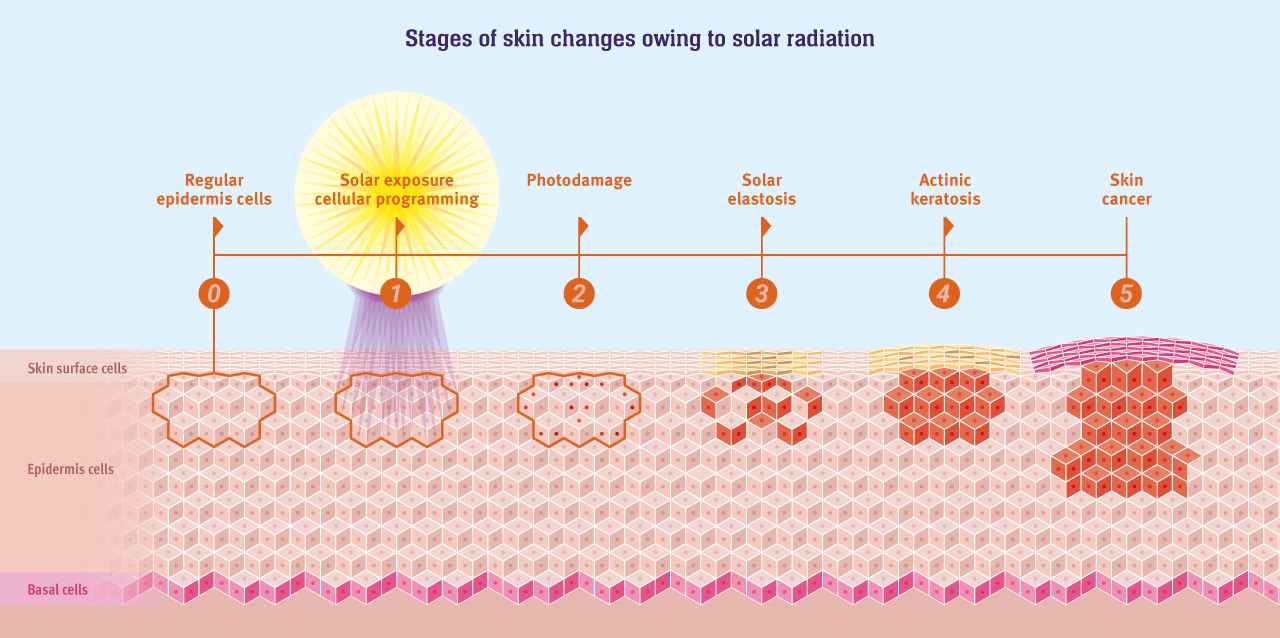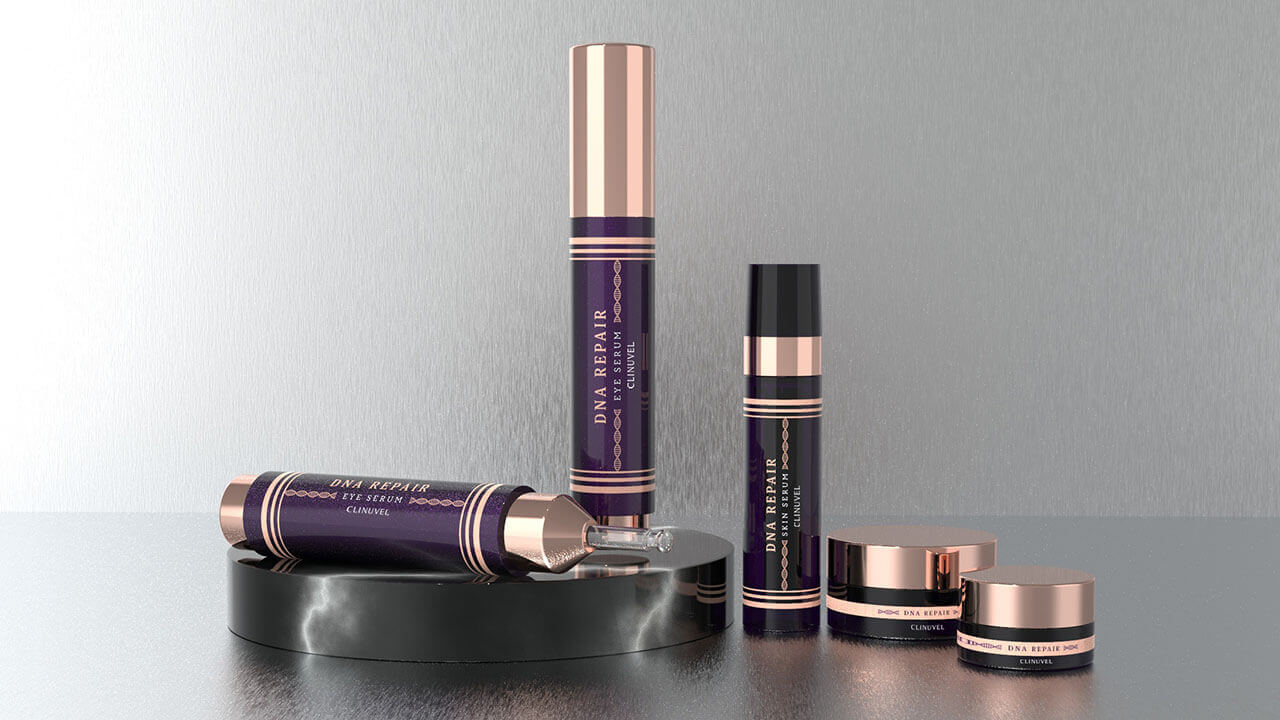Progress Towards OTC Product Launch
Developing Healthcare Solutions
Deliberately and carefully over more than two decades, CLINUVEL has become a global leader in photomedicine, devoting its scientists to understanding the impact of the full spectrum of light exposure on human biology.
CLINUVEL is founded upon a culture of exploration, and knowledge building, and sharing. This enriches each of our technical and scientific teams, and often sparks novel solutions and ideas based on data and sound information.
One of our core principles is to act responsibly and for the betterment of human health worldwide. The time has now come for us to share our knowledge, offering the same enrichment to new audiences, as with our leading scientists. Introducing a new language, our science-based approach will encourage audiences to reassess their relationship with solar light and, ultimately, offer healthcare solutions.
Defining the Challenge
Exposure to solar light (also referred to as solar radiation) is the single most important factor contributing to the risk of skin damage (photodamage), actinic changes (elastosis) and, eventually, skin cancer(s).
From the first moment of sun exposure as children, we incur biological and skin reactions which may impact our health later in life. As we age, our genetic make-up and cumulative solar exposure compound our risk for developing the three most frequent skin cancers: basal cell carcinoma, squamous cell carcinoma and melanoma. Common to each of these skin cancers is a certain dose exposure to polychromatic light (light of multiple wavelengths). Protecting skin from light is essential to reducing the risk of skin cancer.
For decades, CLINUVEL’s research & development teams have focused on the effects of UV and high energy visible (HEV) light on human health, centred around skin and photoprotection.

The impact of HEV on skin is only just beginning to be widely understood, yet it affects us all. HEV exposure leads to the generation of reactive oxygen species (ROS) which damage cellular skin structures, as well as increased skin pigmentation, and – in certain populations – to irreparable severe burns.
CLINUVEL’s expertise in HEV is founded on our experience developing and delivering the first and only treatment for erythropoietic protoporphyria (EPP) patients, who are prone to intolerable skin burns, reactions, due to visible wavelengths of light. We pioneered the world’s first systemic photoprotective drug, SCENESSE®, to successfully protect these patients against polychromatic light. With extensive and unique expertise, we are now deploying our specific technologies for wider populations at Highest Risk of skin cancer, translating complex subjects and data into understandable knowledge, and a range of skin protective and reparative products.
Targeted Audiences
Global skin cancer rates are increasing, with environmental changes playing a role. Each of us is at risk of photodamage, but there are populations at Highest Risk. Individuals with minimum pigmentation (or fair skin complexion), and those who burn easily following sun exposure are at higher risk of photodamage.
There are three further groups in the world, however, who are regarded as being at the Highest Risk of photodamage and skin cancer:
- immunocompromised;
- personal or family history of skin cancer; and
- extreme outdoor athletes and professionals.
Immunocompromised
Around 3% of the global population have a weakened or compromised immune system, placing them at higher risk of photodamage and skin cancers. A compromised immune system can result from genetic diseases, acquired illness, or the use of immune suppressive drugs to combat an illness or to preserve a new organ after receiving a transplant. In all these cases, the suppression of the natural immune system leads to an increased and high risk of photodamage and developing skin cancer, and warrants extra skin protection for life.
Unfortunately, the unintended postliminary effects of suppressing the immune system, such as photodamage and skin cancers, only become apparent years or decades later. Many people are not aware of this risk. In some instances, there may be short-term care, but long-term attention is
often missing.
Personal or family history of skin cancer
Individuals with a previous history of skin cancer and, or a family history are at much higher risk of photodamage. Often this higher susceptibility to photodamage is due to genetics, and the additional longer-term exposure to polychromatic light sources emitted by the sun, increasing the chances of developing skin cancer.
The risk of recurrent skin cancer is stark. Approximately 60% of people who have one skin cancer will have another within ten years. Those who have had two or more squamous or basal cell carcinomas have a 61.5% chance of another within two years.
Genetics and family history of skin cancer also plays a role. Up to 10% of melanoma patients have a close family member with the disease and there is a strong association between a family history of skin cancer and early-onset basal cell carcinoma.
All this research recognises, however, that the lead risk factor for photodamage and skin cancer remains solar and ultraviolet exposure.
Extreme outdoors
Our desire to take on challenges, compete, and experience new environments leads us to spending more and more time in the great outdoors.
But our environment has a direct impact upon our health. At altitude, solar light is more intense. Reflective surfaces, such as snow, sand, water, and ice amplify radiation exposure. Extensive time in these environments dramatically increases the risk of photodamage, even though it may not be visible initially.
All of us engaging in these extreme outdoor activities increase our risk of photodamage as time goes on.
Information, solar protection, and longitudinal care are the only remedies to decrease the rate of photodamage in extreme outdoor athletes and professionals, and to secure improved health.
CLINUVEL has taken on the challenge to accompany these audiences on a journey of polychromatic solar protection, assisted DNA repair while providing information and longitudinal care to people at highest risk of photodamage and skin cancer.
Healthcare Solutions Product Lines
CLINUVEL is advancing the development of next generation leave-on products for skin care. The following product lines are planned in sequence:
- a polychromatic skin protection product line;
- a product line to stabilise melanogenesis; and
- a product line to assist cellular DNA repair.
These product lines will be revealed progressively over time.
The first product will contain active ingredients and chromophores to offer polychromatic protection over a wider-spectrum of wavelengths compared to existing solar protection products. In addition to the UVB and UVA protection offered by a broad-spectrum sunscreen, CLINUVEL’s Polychromatic Screens will also provide effective protection against HEV light, a wavelength band responsible for the higher oxidative stress in the human skin. Thus, the polychromatic product will serve to reduce total light exposure through high protection.
The second product line aims to stabilise pigmentation, while providing anti-oxidative effects and polychromatic protection.
The third melanocortin-based product lines aim to enhance protective properties and repair of the skin. They will offer differentiating and specialised care to users, by enhancing all the major pathways that our skin activates to reduce photodamage early in the process:
- enhance melanogenesis to reduce photo exposure to both UV and HEV;
- induce antioxidative enzymes activities to reduce oxidative stress; and
- enhance DNA repair to help reduce or prevent mutation and carcinogenesis.

The Path to Product Launch is Building Audiences
CLINUVEL is preparing the first product line for launch in 2022, with an extensive digital outreach campaign to engage the identified three targeted audiences. The Company has selected a team of CLINUVEL Ambassadors (CUVAs): members of each of the Highest Risk communities who have committed to help raise awareness of the risks and damage caused by UV and HEV light across various social media platforms. More specifically, the CUVAs will communicate information on solar radiation, DNA damage and skin cancer risks. The Company has commenced the first of three initial campaigns to evaluate content generation, adherence, and subscription rates. Complementing this is the dedicated platform, lightskinscience.clinuvel.com.
We are continuing to build connections with the targeted audiences. Our objective is to build a connected community through digital marketing of 25 million people over the five years to 2027, driven by the Communications, Branding & Marketing Division.
